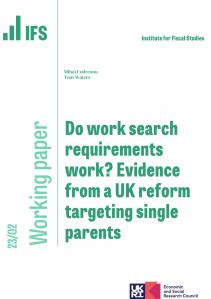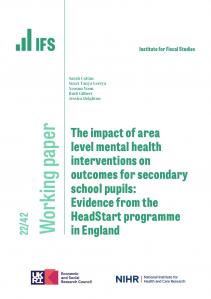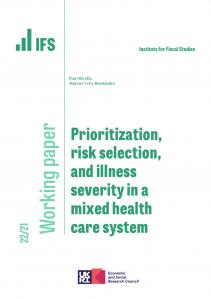If the picture painted by the Treasury in this year's Budget is correct, we are currently suffering a "bust" without having enjoyed a "boom". The official story is that after the dramatic ups and downs of the late 1980s and early 1990s, the current government kept activity in the economy impressively close to its "Goldilocks" level - neither too hot nor too cold - until a virulent strain of banking flu arrived unpredictably from the US and pushed us into recession, as well as sharply reducing the economy's long-term productive potential.
We can see this version of history in Chart 1. This shows the Treasury's estimates of the "output gap" - the difference between the actual level of economic activity and the Goldilocks level consistent with stable inflation. At the time of last year's Budget, activity in the economy was expected to remain pretty close to its sustainable level. In this year's Budget we see the Treasury permanently reducing its estimate of that sustainable level by 5% (or £70 billion in today's money) between mid 2007 and mid 2010, relative to the path assumed in last year's Budget. It then expects the actual level of activity to fall another 5% below even that reduced estimate of the economy's potential.
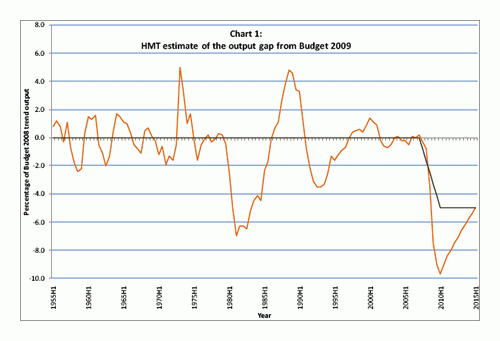
This picture helps the Treasury explain: first, why we are about to see such a dramatic increase in government borrowing, and; second, why a large proportion of that extra borrowing will not disappear without a policy squeeze as the economy returns to its Goldilocks state. But those of a cynical disposition may suspect that this particular depiction of history is also designed to avoid casting an unflattering light on the quality of macroeconomic management during Gordon Brown's decade as Chancellor of the Exchequer leading up to the crisis.
An alternative view of history is that the productive potential of the economy did not go into sudden and unpredictable decline in mid-2007, but rather that the Government - among many others - consistently overestimated the potential of the economy in the good years, lulled into a false sense of security by global disinflation.
We can see this version of history in Chart 2. As an alternative to the Treasury's belief that the productive potential of the economy grew by almost 3½% a year in Labour's first term and then by roughly 2¾% a year thereafter until the crisis hit and trend growth fell to 1% a year for three years, we can assume that the productive potential of the economy grew at 2.6% a year throughout. We would still expect to see economic activity running 5% below its potential in 2010, as the Budget predicts, but we would also see that it had been running roughly 3% to 4% above potential from 2000 to 2007.
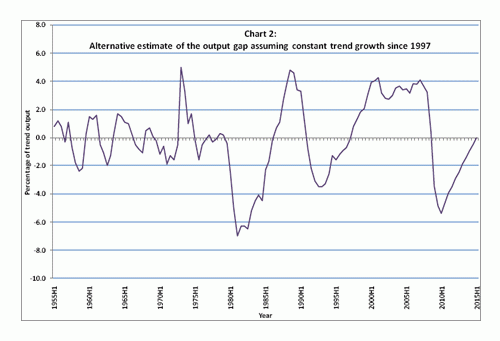
If the considered view of history is that the Treasury missed a boom of this magnitude, it will cast a much less flattering light on Mr Brown's record as Chancellor. It would certainly suggest that he should have been running a much stronger fiscal position during this period. But it also poses much more awkward questions about the goals of monetary policy. During this period the Bank of England's Monetary Policy Committee was instructed to keep retail or consumer price inflation low and stable - and did a much better job that most people would have predicted beforehand. The Treasury's view that the economy was at its Goldilocks level in 2006-07 was also supported by a range of evidence that overall pressures on retail price inflation were subdued.
If the missing boom manifested itself in asset and credit markets - rather than those for labour, goods and services - then to do what we can to promote stability in the future the Bank will have to be given a rather more opaque and multi-faceted target to pursue than it has been required to pursue to date.






